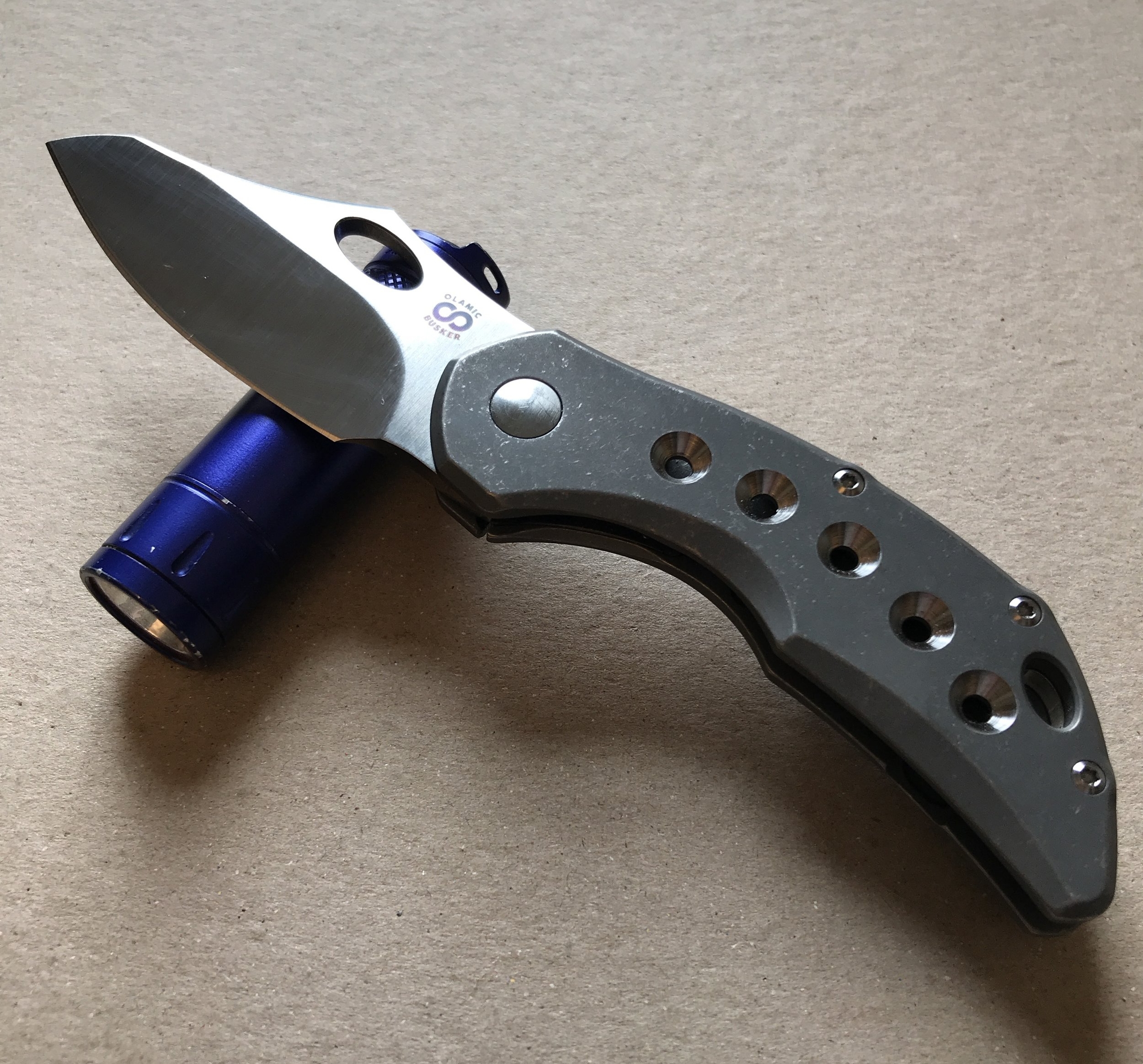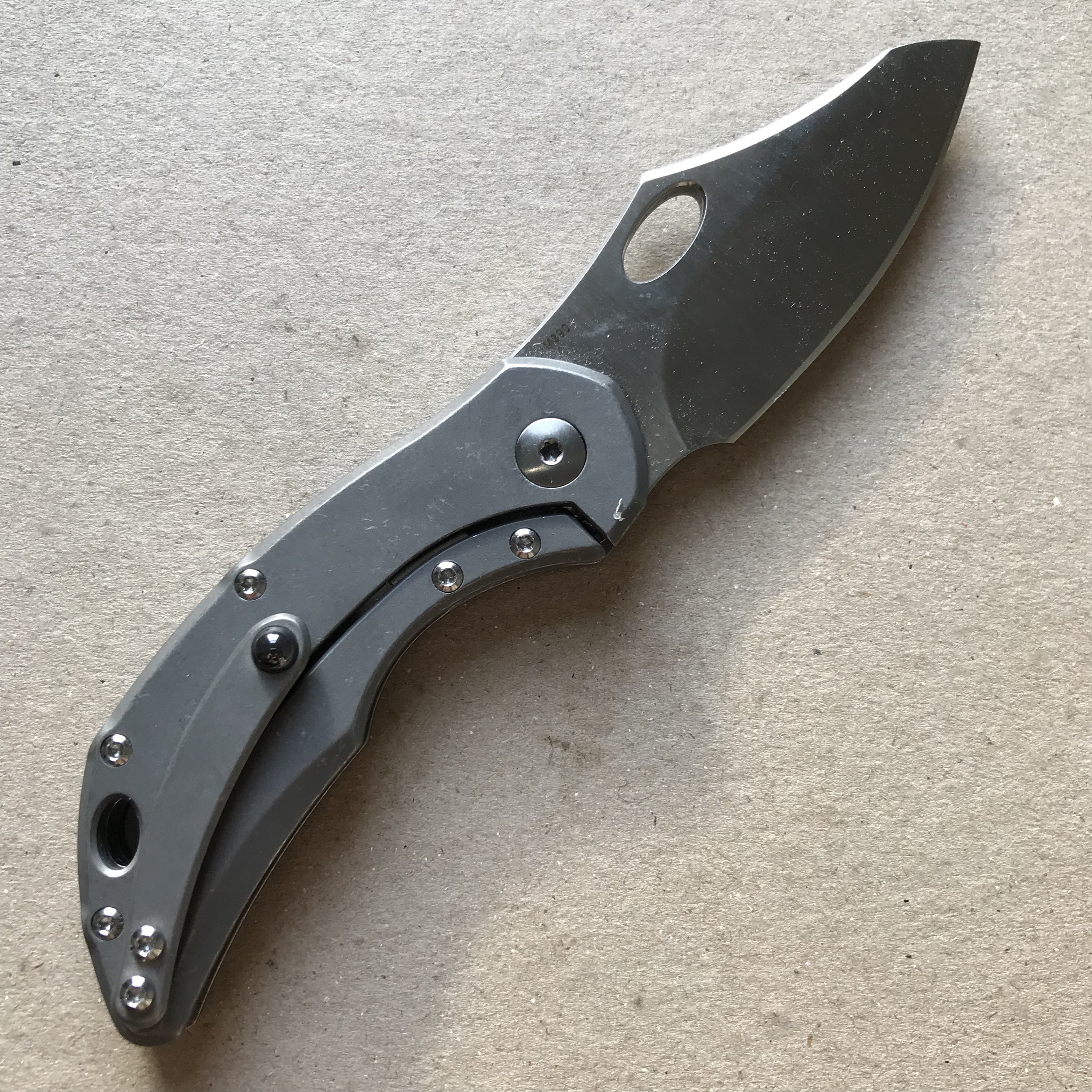Olamic Busker Review
As a woodworker, I am not gifted. I can muscle out some nice looking things, but they are functional first and beautiful, if at all, accidentally. But one thing making things from wood has taught me is just how good some masters of the craft really are. I love the sweeping, agile curves of a Maloof rocker or the balance and poise of a Krenov cabinet, but for my money no one makes better more cohesive exhibitions of craft than the Greene and Greene brothers. They didn’t just make a chair or a table (though they ones they did make were incredible—see e.g. the Blacker House Chair), they designed and built entire houses, from the Asian-influence roofs to the sconces around the fireplace. Their ability to create a cohesive aesthetic all the while varying it from item to item is remarkable. I don’t feel like it is an exaggeration to say that some of the Greene and Greene work is the finest exhibition of craftsmanship in the world. Variation and cohesion is almost impossible to achieve, and yet, time and again, the brothers did it and did it well.
Olamic Cutlery is doing something very similar in the knife world. They bring cohesion and craftsmanship to a bafflingly large variety of knives. I was originally stunned that Bark River could do all of the variations that they do, but by comparison, Olamic is on another level. It’s as if the modding trend and high end production knife making have merged. Are the knives customs or midtechs or production knives? The only meaningful answer, imparted because of their coherence, is that they are Olamics.
When the Busker debuted at Blade Show, I was eager to get my hands on it. It was the first Olamic with a blade under 3 inches and looked like a marvelous EDC. When Eugene and I chatted over email and he let me know the Busker was coming, I was like a kid on Christmas Eve (which, if everything works out is when you are reading this). The Busker is a unique little blade with all of the awesomeness of an Olamic in a carry friendly package.
Here is the product page. It costs $365 for the base model. Here is a video review. Here is my video overview. Here is a link where you can buy the Busker:
And here is the review sample:
Twitter Review Summary: Custom quality, production availability AND design creativity—we have a winner.
Design: 2
While this knife absolutely deserves a two for its creativity and effectiveness, its not to say that the design is perfect. There are issues with the flipper, which I will address below. But, for the most part, the Busker is that rarest of items—something that is unconventional in its design but equally effective to more traditional creations. That is the sign of a truly inspired design. To get strikingly different but equally effective to work, the designer has to really know what he or she is doing and the Busker confirms that Eugene, et al get it. In many ways the Busker evokes the quixotic style of an Ed Schempp Spyderco, which is another way of saying, the Busker looks like it was designed by one of the best in the business. The folks at Olamic clearly have a ton of knife design talent.
The performance ratios are nice, especially compared to other Olamics out there. The blade:handle is .67, which is not great, but the unconventional handle design and protruding front flipper tab screw up that calculation a bit. The blade:weight is .80, which is decent for an all metal knife.
Fit and Finish: 2
The Wayfarer was awesome. It felt like a step above production and midtech knives. The Busker is much the same. Between the gleaming surfaces and the immaculate stonewashing, I don’t know what else I could ask for here. The Busker evinces an eye for detail on the part of its builder, something that rivals work from Chris Reeve. That’s good company to keep in terms of fit and finish.
Grip: 2
The cutting edge is actually well below your knuckles when you hold the knife given the Busker a very aggressive, very precise cutting posture. There are very few knives that have this set up. The Spyderco PPT does, but not to the same degree. In practice, this grip, however unconventional it may be, is an excellent feature for a small, general purpose EDC knife. This is one of the best grips on any knife out there, strange as it looks.
Carry: 2
At under 3 ounces, and with lots of swooping curves and heavy chamfers, the Busker is great in the pocket, even with a more pokey than necessary flipper. Its also helpful that the review sample came in a very heavy stonewashed finish. Its like the Busker has been in my pocket for years—both comfortable and worn.
Steel: 2
M390 is just so good. Its a practically perfect steel, well balanced across the three core attributes of hardness, toughness, and corrosion resistance. It is balanced and clean. It takes and keeps and edge. I do prefer 20CV a bit better because it is noticeably (though only slightly) easier to sharpen. Still, the M390 family—M390, 20CV, and 204P—are clearly among the best steels in the world.
Blade Shape: 1
The Busker has three blade shapes—the Vampo (which looks a lot like the blade on the Spyderco Cricket), the Largo (which looks like the blade on the CRKT Pilar), and this blade, the Semper. I am not partial to either this blade shape or the Vampo. They turn a small, convenience knife into something that looks scary and aggressive. They are also unnecessarily complex (how one would sharpen the Vampo is beyond me). This blade shape as an odd peak in the middle of the spine, looking like the steel, while still molten, got snagged on something and then solidified in that shape. I don’t like it, my wife, who is my “is this scary” detector, REALLY didn’t like it, and quite a few IG commentors agreed. The Largo, on the other hand, looks incredible. I would imagine that over time Olamic will produce as many Largos as the other two combined.
Grind: 2
Olamic’s grinds are never sharp angular things, but their curving, swooping plunge lines are still exciting, and, in some ways, more difficult to pull off. The grinds are even side to side, they remove the right amount of material from either side, and they bring the stock down to a ultra keen edge. The grind is a thing of beauty and a mark of craftsmanship.
Deployment Method: 1
The front flipper tab here is just too long. It not only makes the knife a bit pokey in the pocket, it makes it hard to disengage the knife from the locked position. Because the tab extends so far beyond the pivot, it rests very close to the center of the spine of the handle. As a result you really have to choke down on the handle to make sure that it clears your hand as rotates to the closed position. Once you get used to it, it works okay, but as the Shamwari proved—if done well and textured correctly, you don’t need that much of a flipper tab to make a front flipper work. After all, that’s one of the benefits of the front flipper design—it can have zero impact on the overall shape of the knife.
Retention Method: 2
The clip is a bit of excessive flair. You don’t need a ball bearing tip, but it works well. The standoffs are complex, more complex than needed, but they too work. The clip also happens to fit the aesthetic of the knife incredibly well. It just looks right. Also, its proof that you can do something complex and effective, unlike the majority of the sculpted titanium clips.
Lock/Safety: 2
The lock bar here looks incredibly strange, like a boomerang or an errant stroke from an abstract artist’s brush. It is quintessentially Olamic its look, but it works just as well as the lock on any knife out there. It engages and disengages correctly. It snaps into place and there is no blade play whatsoever.
Overall Score: 18 out of 20
I like the Busker a lot, its effective, the right size, and bears the unmistakable touches of an Olamic blade. I prefer the Semper bladeshape over this one and the front flipper is not exactly perfect, but besides that the unconventionality works here. The knife is both different looking and incredibly effective. Like with the work of the Greene Brothers there is something unique, high quality, and hard to describe about Olamic Cutlery knives. There is a cohesiveness to their design that is impossible to mistake. It could be the quality of the execution, the fact that each is different, or the fact they buck tradition and still work well. The Busker is special. Olamic is special and we are watching them spread their wings.
Competition
We are in an era of rebirth for small, high end knives. Between the Busker, the Half-Track, and the Inkosi, we have something of an embarassment of riches. It is a good thing too because after the end of the Strider PT and the ZT0900, there was something of a drought in this part of the market. I am glad the drought it over. The good thing is that any of these three knives are exceptional. The convetional choice is the Inkosi. The hearty choice is the Half-Track. And the Busker is for the non-conformist. I have handled two of these three and right now I couldn’t pick between the Half-Track and the Busker, especially if I were picking my preferred blade shape.








